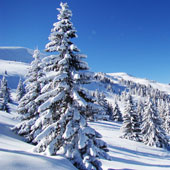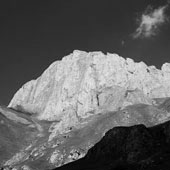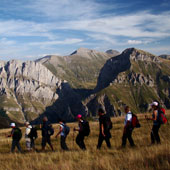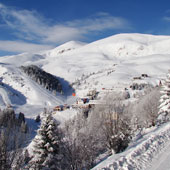Fungi
Total of 365 fungi species has been identified on Sar Planina Mt. and 210 of these fungi species are lignicolous, and the rest terricolous. Most of them are basidiomicetes fungi (330 species), followed by ascomicetes (30 species) and lichens (5 species).
The following are the most common fungi species on Sar Planina Mt: Agaricus campestris (Field mushroom), Agaricus macrosporus (Horse mushroom), Amanita rubescens (Blusher), Armillaria mellea (Honey mushroom), Boletus aestivalis (Cep boletus), Boletus edulis (Summer boletus), Bovista plumbea (Paltry puffball), Cantharellus cibarius (Chanterelle), Diatrype disciformis, Diatrype stigma, Hebeloma sinapizans, Laccaria laccata, Lactarius piperatus (Peppery milkcap), Lepistanuda (Wood blewit), Lycoperdon perlatum (Common puffball), Marasmius oreades (Fairy ring mushroom), Mycena pura (Lilac bell cap), Panellus stypticus, Peniophora quercina, Poly poms arcularius, Russula cyanoxantha (Charcoal burner), Schizopora paradoxa, Stereum hirsutum (False turkey tail), Trametes hirsuta, Trametes versicolor, Vuilleminia comedens and Xerula radicata.
Most of the species (219) have been recorded in beech forests, and 74 in spruce forests, 51 in oak forests, 22 in chestnut forests, etc.
From among parasitic species, the following are specific: hrmillariella mellea (Honey mushroom), Fomes fomentarius (tinder), fomitopsis pinicola (Red banded polypore), Ganoderma applanatum
Around 80 out of the mentioned 365 species can be used as edible by men. In this context, the following are the most prominent: Amanita caesarea (Caesar's mushroom), Boletus edulis (Summer boletus), Boletus aestivalis (Cep boletus), Boletus aereus (Dark boletus) and Boletus pinophilus (Pine boletus), Cantharellus cibarius (Chanterelle) and Morchella spp. (Morels).
Certain fungi species on Sar Planina Mt. can be regarded rare species. Out of those, 18 species are considered important species for biological diversity.
The species Agaricus campestris, Agaricus macrosporus, Amanita caesarea, Auricularia auricula-judae, Basidiodendron caesiocinerea, Boletus rhodoxanthus, Boletus satanas, Boletus regius, Craterellus cornucopioides, Exidia pythia, Lopharia spadicea, Macrolepiota procera, Phlebia griseo-flavescens, Sarcodon imbricatus and Volvariella bombycina have been proposed for conservation under the Preliminary Red Book of Fungi in the Republic of Macedonia. Agaricus campestris, Agaricus macrosporus, Amanita caesarea, Auricularia auricula-judae, Boletus satanas, Boletus regius, Craterellus cornucopioides and Macrolepiota procera belong to the group of rare species that are threatened due to excessive collection.
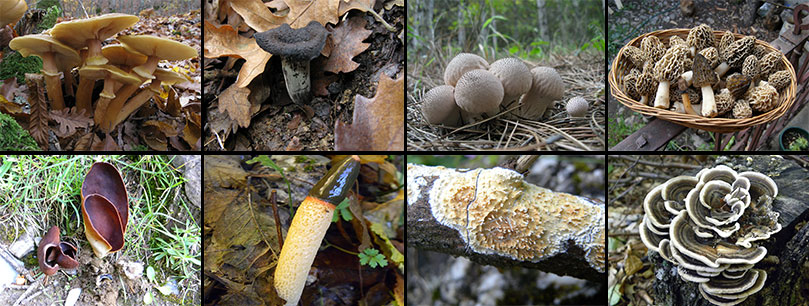
Armillaria mellea / Craterellus cornucopiuoides / Lycopedron perlatum / Morchella spp
Otidea auricula / Mutinus caninus / Radulomyces mollaris / Trametes versicolor

